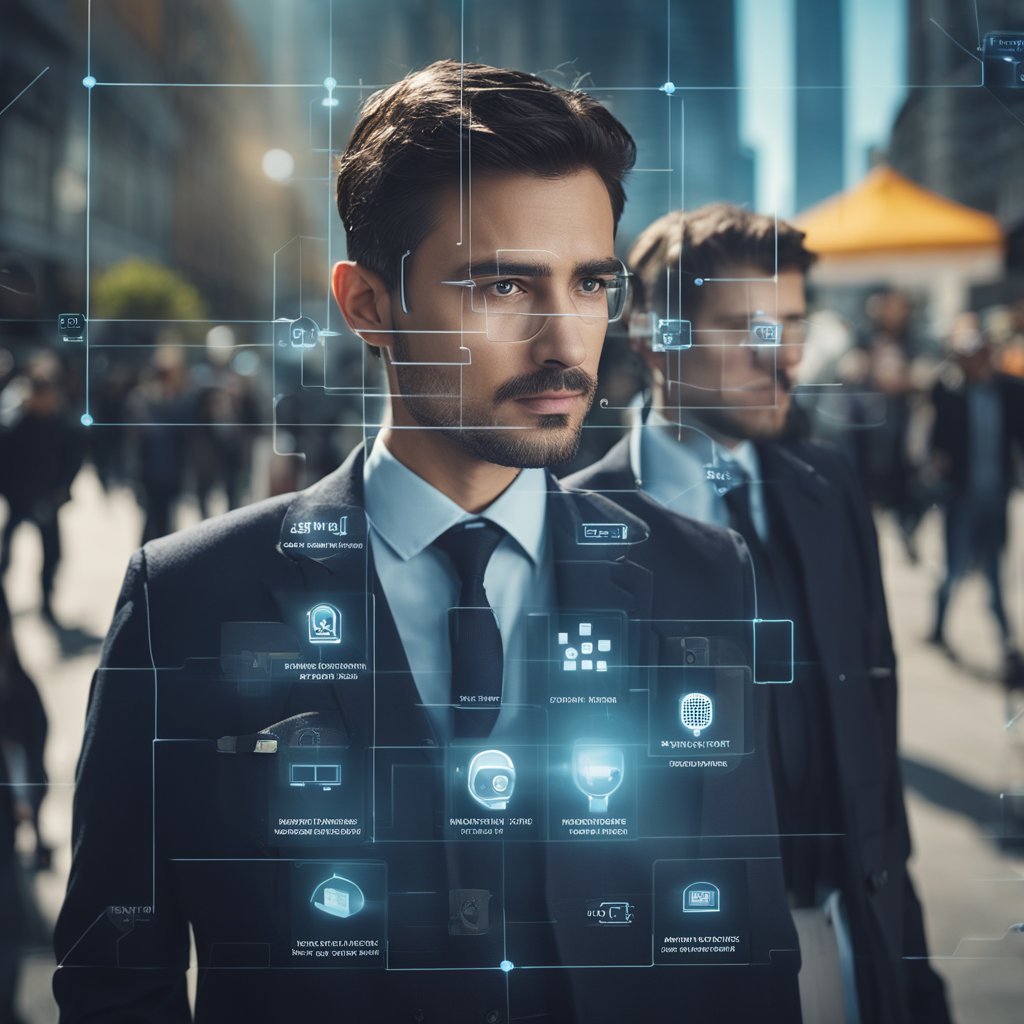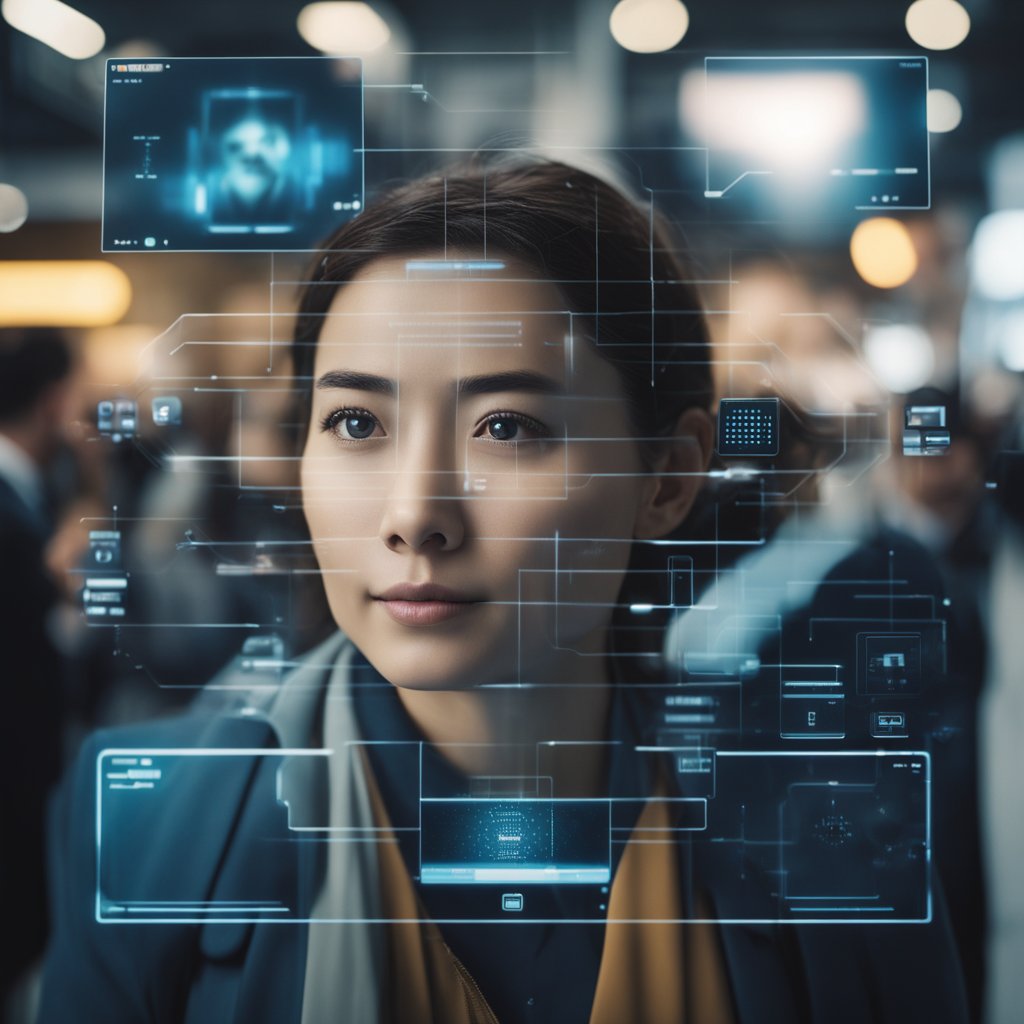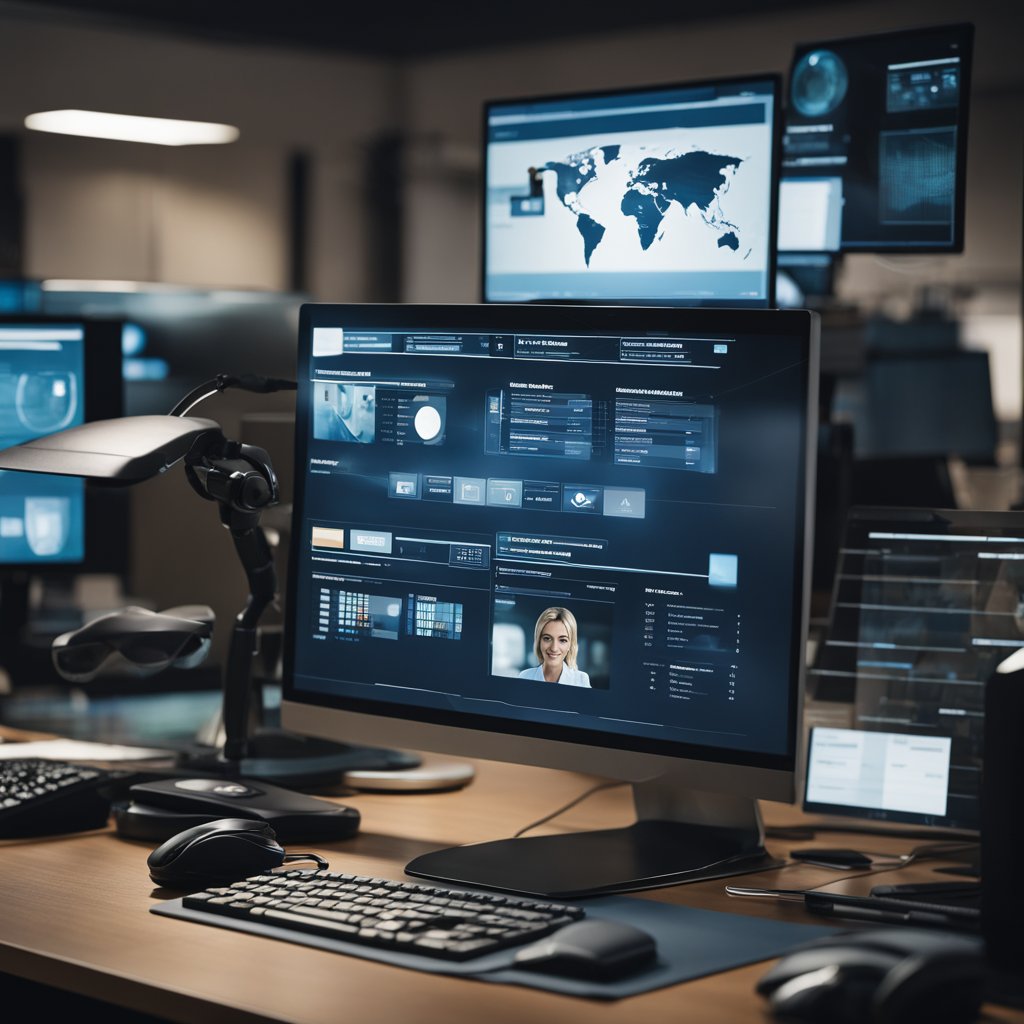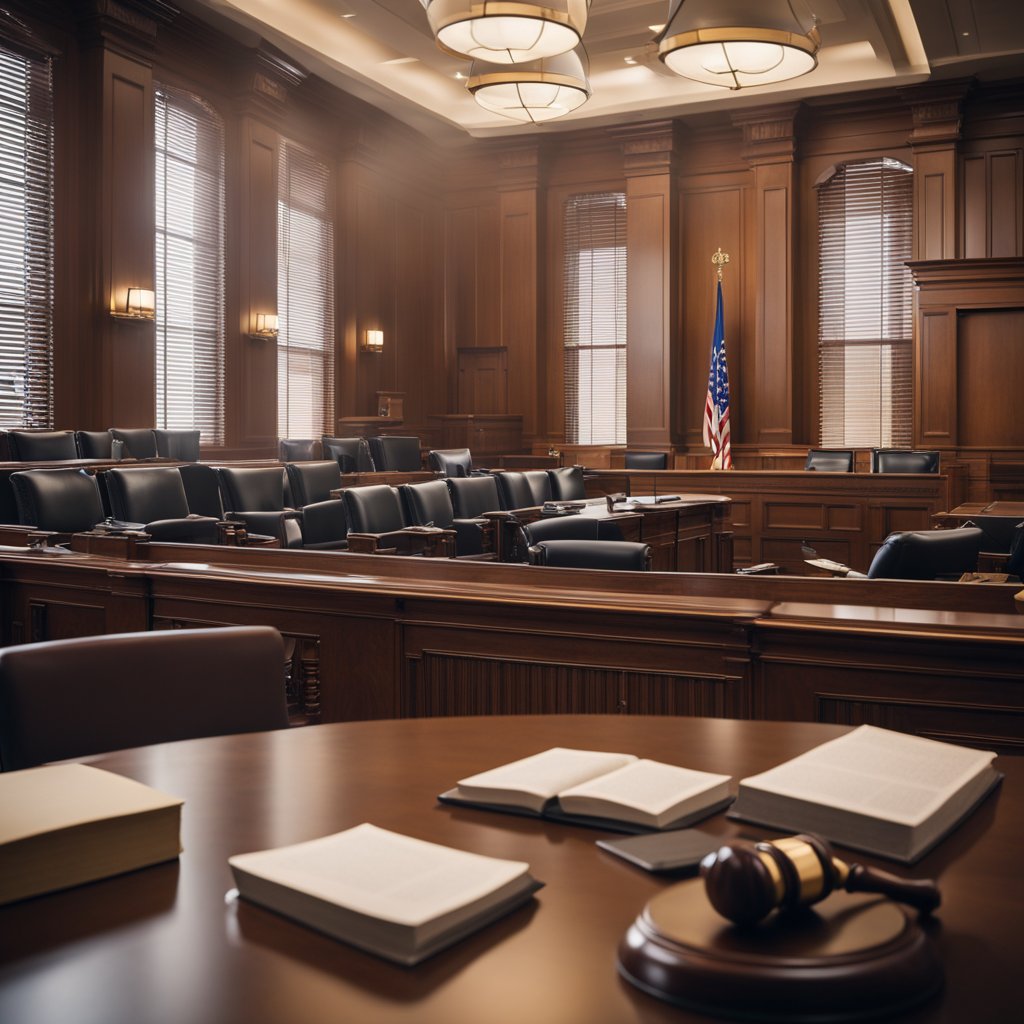Private Investigators and Facial Recognition: Navigating Ethics and Legality
With the advent of technological advancements, private investigators have found a new ally in facial recognition technology. This powerful tool has revolutionized the way we conduct investigations, allowing for the swift identification and tracking of persons of interest. Facial recognition works by analyzing specific facial features to create a digital fingerprint, which can then be compared to a database of known individuals to find matches.
As we harness the potential of facial recognition, we understand its roles and limitations in private investigation. Concerns about accuracy and reliability are as paramount as the capabilities the technology presents. While it certainly aids in surveillance and monitoring, achieving precise results often depends on factors like image quality and the algorithms used. Moreover, we must navigate a complex web of legislation and regulatory landscapes that govern the use of this technology.
Highlights
- Facial recognition is a transformative tool for private investigators.
- Concerns about the accuracy and legal use of facial recognition persist.
- Effective use requires understanding technological capabilities and restrictions.


Overview of Facial Recognition Technology
In our exploration of facial recognition technology, we focus on its sophisticated mechanisms, prevalent uses, and the significant ethical dialogues it prompts.
Technology and Applications
Facial recognition technology operates through advanced artificial intelligence (AI) and machine learning algorithms. These systems parse through visual data, capturing distinctive facial features—such as the distance between the eyes or the contour of the cheekbones. Applications are broad and varied, from unlocking personal devices via an app to enhancing security protocols through surveillance cameras.
Facial Recognition Systems
A facial recognition system is a complex integration of hardware and software. It initiates with a digital image, typically procured from a video or photo, which then undergoes analytic processing. The system maps the geometry of the face to create a facial signature. This signature is used to compare with a database of known faces to establish identity with a high degree of accuracy.
Privacy and Ethical Considerations
The deployment of facial recognition raises privacy and ethical considerations. Concerns center on the potential for unwarranted intrusions into personal privacy and the clandestine monitoring of individuals without consent. This technology must balance the benefits it offers against the consent of the individuals it identifies and the possibility of misuse.
Facial Recognition in Private Investigations
In private investigations, facial recognition technology has become an indispensable tool for us to identify and track individuals in various investigations. We ensure the utmost confidentiality for our clients while utilizing cutting-edge techniques and tools.
Roles and Responsibilities
We, as private investigators, have the responsibility to use facial recognition ethically and legally to serve our clients’ interests. When tasked with identifying subjects, we apply this technology to analyze visual data from photos or videos. Our role often involves sifting through large data sets to track down individuals or gather evidence in support of our client’s needs. The integrity of our work relies on the legitimate use of facial recognition within the bounds of privacy laws and regulations.
Techniques and Tools
To effectively conduct our investigations, we employ a range of techniques and tools. For instance, we use databases that contain legally-obtained images such as mugshots or public records to cross-reference and identify subjects. Our tools are sophisticated software systems capable of rapidly comparing facial features against a database to find potential matches. These systems can include proprietary databases as well as tools developed by private companies, such as those documented in the use by federal agencies for criminal investigations. We are continually updating our techniques in response to advancements in facial recognition technology, ensuring that we remain at the forefront of our field.
Client Confidentiality
Confidentiality in our work is paramount. We take extensive measures to safeguard the identities and sensitive information of our clients. This includes secure storage and transmission of data, and adhering strictly to confidentiality agreements. All information gathered through the use of facial recognition is handled with the highest level of discretion. We pride ourselves on being trusted allies to our clients, maintaining their confidentiality throughout all stages of the investigation.


Accuracy and Reliability Concerns
When discussing facial recognition technology, it’s imperative to explore the intricacies of recognition algorithms, acknowledge the bias and error rates ingrained in the systems, and understand the impact these factors have on identity verification processes.
Recognition Algorithms
We recognize that facial recognition systems hinge on sophisticated algorithms. These algorithms are designed to process and analyze facial features, comparing them to databases of known faces with the intent to match identities. Although some systems exhibit high accuracy under controlled conditions, concerns arise when variables such as lighting, angle, and expression come into play. Studies have showcased that verification algorithms can tout impressive accuracy; however, the robustness of these algorithms across varied, real-world conditions remains under scrutiny.
Bias and Error Rates
We are aware that algorithmic bias is a pressing issue. This bias can lead to differential error rates, particularly among various demographic groups. Notably, these biases can manifest as higher rates of false positives or false matches, which have significant implications for individuals mistakenly identified. The risk of misidentification tends to be higher for people of color, as some facial recognition systems have shown disparities in accuracy across different ethnicities.
Impact on Identity Verification
In the sphere of identity verification, the promise of facial recognition technology is tempered by our concerns regarding its reliability. In high-stakes scenarios such as criminal investigations, the potential consequences of a false positive—a match incorrectly confirming an individual’s presence at a scene—carry weighty implications. Similarly, in private investigations, the accuracy of facial recognition can determine the outcome of a case, making it essential that we consistently evaluate and address the technology’s reliability to ensure just processes.
Surveillance and Monitoring
In the realms of both security and privacy, surveillance and monitoring tools, particularly facial recognition technology, play pivotal roles for various entities including law enforcement agencies, commercial businesses, and the general public.
Law Enforcement and Security Agencies
Law enforcement and security agencies extensively utilize surveillance cameras and facial recognition software to monitor public areas and identify individuals. These technologies assist in crime prevention and investigation, allowing for swift identification of suspects. For instance, during significant public events, security agencies actively deploy these tools in crowd monitoring to ensure safety and order.
Commercial and Private Sector Use
In the commercial sector, businesses employ monitoring systems to secure their premises and assets. Beyond traditional security, these systems are often used to gather consumer data for marketing purposes. Shops, for example, may track customer movements to analyze shopping behavior and preferences, which can raise concerns over individuals’ privacy rights.
Public Perception and Privacy Rights
Public perception of surveillance often hinges on the impact on privacy rights. With the capacity to track individuals without their explicit consent, there’s a growing debate on the balance between the benefits of facial recognition for safety and the privacy it potentially compromises. Recent discussions have emphasized the importance of safeguarding personal information, leading to calls for regulatory frameworks to protect privacy in the digital age.


Legislation and Regulatory Landscape
As we explore the complex interplay between private investigators and facial recognition technology, it’s critical to understand that a robust framework governs its use. From domestic policies shaping law enforcement’s adoption of the technology to international standards that guide privacy protection, legislation and regulation form the bedrock of accountability and ethical use.
Domestic Policies and Regulations
In the United States, our federal and state governments have enacted a variety of laws to manage facial recognition technology. For instance, various proposed bills seek to set boundaries for the ethical use of this tool by law enforcement agencies such as the Federal Bureau of Investigation (FBI). These efforts range from the George Floyd Justice in Policing Act, aiming to reform policing practices, to the Stop Biometric Surveillance by Law Enforcement Act, which underscores the growing concerns over privacy.
To ensure adherence to the First Amendment, the Government Accountability Office (GAO) underscores the need for regulations that protect citizens’ rights while government agencies like the National Institute of Standards and Technology (NIST) work to develop standards that ensure the technology’s reliability and accuracy.
State Level:
- Restrictions on use by private entities and law enforcement
- Guidelines for data privacy and storage
At the state level, regulations often focus on biometric information collection and storage by private industry, with some states stepping in to regulate law enforcement use of facial recognition explicitly.
International Privacy Standards
Internationally, the European Union (EU) has been at the forefront of setting stringent privacy standards. The EU’s draft Artificial Intelligence Act proposes to restrict public use of facial recognition, reflecting their commitment to privacy rights.
In the United Kingdom and Australia, debates underscore the necessity to balance national security with individual privacy. Meanwhile, countries like Russia have taken a more expansive approach, implementing facial recognition broadly with fewer explicit privacy safeguards.
Global Examples:
- EU: Artificial Intelligence Act
- UK & Australia: Privacy debates balancing security and rights
- Russia: Expansive use with minimal privacy restriction
Corporate and Organizational Guidelines
Beyond government regulation, private investigators must also navigate corporate and organizational guidelines that often exceed regulatory requirements. Companies increasingly maintain their own privacy policies and frameworks for ethical use, with guidelines on consent and transparency. These policies must align with both federal and state laws, as well as international privacy standards depending on the jurisdiction of operation.
Some of these include:
- Consent requirements for the collection of facial recognition data
- Transparency in how data is used and who has access to it
Private organizations like the National Law Review indicated that 2023 is seeing new legislative proposals that could reshape the biometric privacy landscape, signaling an ongoing evolution of guidelines that impact the use of facial recognition across the board.
Ethical Implications and Society
In our exploration of facial recognition technology (FRT) employed by private investigators, we must consider the delicate balance between efficacious surveillance and the upholding of ethical standards. It is imperative that we scrutinize the intersection of technology with privacy rights, transparency, and the potential erosion of public anonymity.
Public Trust and Acceptance
We are aware that the public trust in FRT is contingent on its perceived integrity and the equitable enforcement of justice. Societal acceptance of facial recognition by private investigators hinges on the assurance that the technology will enhance security without infringing on privacy rights. It is crucial that there be clear and transparent policies governing the use of facial recognition to maintain this trust.
Protecting Civil Liberties
Our commitment to protecting civil liberties compels us to confront the privacy implications of facial recognition. This commitment mandates private investigators to operate within a framework that ensures privacy concerns are addressed without exception. Striking the right balance requires us to be constantly vigilant and responsive to feedback regarding the impact of FRT on individual freedoms.
Addressing Surveillance Concerns
In addressing concerns about surveillance, we must champion the principles of anonymity and privacy. It is our responsibility to limit the scope of surveillance to protect privacy and prevent unwarranted intrusion into individuals’ lives. The ethics of using FRT must be at the forefront of our considerations, promoting policies that safeguard against the misuse of this potent technology.
Cutting-edge Developments and Future Outlook
In exploring the latest advancements and predictive trends, we uncover how artificial intelligence and regulatory landscapes are shaping the future of private investigations through facial recognition technologies.
Advancements in AI and Machine Learning
Artificial intelligence (AI) and machine learning (ML) continue to revolutionize facial recognition systems, enhancing their accuracy and speed. Innovations in deep learning algorithms have allowed these systems to identify features with greater precision, even in challenging conditions such as poor lighting or partial occlusion. An important development in this space includes adaptive learning models that improve over time, effectively reducing false positives and increasing reliability. Recent breakthroughs have also seen AI integrate emotional recognition, providing a more comprehensive toolset for investigators.
Growing Trends in Biometric Surveillance
Biometric surveillance, particularly facial recognition, is rapidly integrating into various aspects of security and law enforcement. As the technology becomes more prevalent, trends towards mobile and real-time surveillance capabilities emerge, empowering investigators to track suspects with unprecedented immediacy. Another growing trend involves the use of geospatial intelligence, which, when combined with facial recognition, can map out criminal activities with geographical context, offering a stronger analytical foundation for case-building.
Predictions for Technology and Regulation
As we look to the future, the interplay between technological advancement and regulatory oversight becomes increasingly complex. We anticipate that the global rise in biometric technology applications will catalyze stricter regulations, with a focus on protecting privacy and data security. It is predicted that technology firms will be encouraged—or mandated—to implement stronger ethical guidelines for AI usage. Additionally, we can expect ongoing discourse around the balance of surveillance benefits against individual privacy rights, as highlighted by discussions on tools like Clearview AI. In tandem, continued innovation in facial recognition is likely, with enhanced diagnostic applications offering new avenues for both medical and security fields to benefit from this formidable technology.
Frequently Asked Questions
In this section, we’ll address common queries concerning the intersection of facial recognition technology and private investigation work, touching on legalities, surveillance enhancement, privacy implications, recent laws, opt-out possibilities, and the impact of accuracy and bias issues.
Private investigators must navigate various legal frameworks that often differ by jurisdiction. Usage of facial recognition technology is typically governed by privacy laws and regulations specific to each area, which may limit the contexts in which this technology can be used legally.
Facial recognition software can significantly enhance the efficiency of surveillance by allowing private investigators to swiftly identify individuals in various types of media. This software aids in streamlining the process of monitoring and can potentially reduce the time spent on manual identification.
The expansion of facial recognition technology poses challenges to privacy rights, including the potential for unauthorized surveillance and data collection. Concerns have been raised about how data gathered by private investigators might be used and stored, and whether this constitutes an invasion of privacy.
Recent legislation, such as proposals from the European Union to restrict public use of facial recognition technology, highlights the global shift towards more stringent governance of these tools. In the US, laws are often enacted at the state level, with some states taking a more regulatory approach than others.
The ability for individuals to opt out of facial recognition databases is not uniform across all jurisdictions or databases. Some regions and organizations provide mechanisms for removal upon request, but these practices are not universally mandated or applied.
Concerns over the accuracy and potential biases in facial recognition technology can influence its use in private investigations. For example, false positives or the misidentification of individuals can lead to ethical and legal issues, prompting a need for private investigators to exercise caution and verify results thoroughly.





